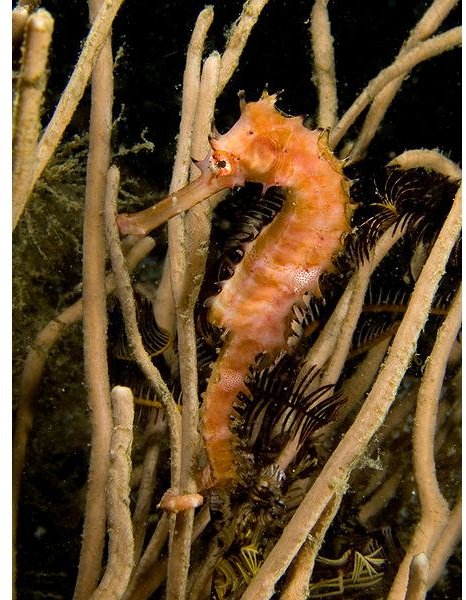All About the Life Cycle of a Seahorse and Other Interesting Facts
Basic Facts about Seahorses
Seahorses are small fish with heads that look like horse heads. There are about 40 species, all belonging to the genus Hippocampus in the family Syngnathidae. They range in size from 2 cm to 30 cm long, top of head to tip of tail. Smaller seahorse species have a life span of about a year, while larger ones live up to five years. They inhabit tropical and temperate shallow marine coastal areas worldwide and can be found in habitats like mangroves, coral reefs, and seagrass beds.
Seahorses eat anything small enough to fit in their snouts - mostly larvae of other animals. Seahorses in turn are eaten by fish larger than themselves who can also get past their bony plates. The biggest seahorse predator, however, is humans. They are collected for aquariums in the western world, and used as medicine in the eastern world.
The life cycle of a seahorse (and some pipefish species) is unique in the animal kingdom for having males that get pregnant. The male seahorse has a brood pouch below his anal fin where he incubates eggs. The pouch isn’t merely a place to hold and hide the eggs, but actually bathes the eggs in a fluid that provides oxygen and nutrients and removes wastes. Eggs embed into the walls of the pouch in much the same way of a mammal womb. The fluid gradually changes over the course of pregnancy to match with seawater.
Seahorse Reproductive Life Cycle
Seahorse adults are typically monogamous through a breeding season. After an elaborate courtship dance that can last several hours, the female seahorse deposits her eggs into the male seahorse’s pouch. There may be as few as five eggs for smaller seahorse species, or as many as 1500 in the larger ones; on average there are a few hundred. For the next two to four weeks, the female visits the male each morning for a brief greeting dance before they separate for the rest of the day. While the male gestates their eggs, the female prepares the next batch of eggs, which may be up to a third of her body size when they are ready.
Pregnancy lasts two to four weeks, with eggs developing faster in warmer temperatures. At the end, usually during the night, the male goes into labor to release the young, which look like miniature versions of the adults. Newborn seahorses are independent from then on, with no more care from their parents. Their father, meanwhile, is ready for the next brood of eggs by the following morning.
Comparing Parental Care With Other Fish
Among fish, males tend to be the primary caretaker of the young (when there is parental care at all). Care can mean fanning the eggs to circulate water over them, removing debris and fungal encroachment, washing them by mouth, keeping them moist if they’re out of the water, and guarding them from predators. It can mean brooding eggs and newly hatched young in the mouth, or having them physically attached to a parent.
Within the family Syngnathidae, which includes seahorses, pipefishes, seamoths, and seadragons, egg care ranges from simply having the eggs attached to a parent (the male in most species), to having a protective pouch that may be opened or sealed, to full male pregnancy as in seahorses and some pipefishes.
References and Credits
Helfman, G.S., B.B. Collette, and D.E. Facey. The Diversity of Fishes. Blackwell Science, Inc. 1997.
Seahorse photo by Nick Hobgood, used under CC-A-SA 3.0 license
This post is part of the series: Fish Life Cycles: Marine Fish
Marine fish are highly diverse, with a wide variety of different life cycles. Many inhabit different types of marine environments at different parts of their life cycles. Some are wholly marine while others also use the brackish habitats of estuaries or even freshwater.
